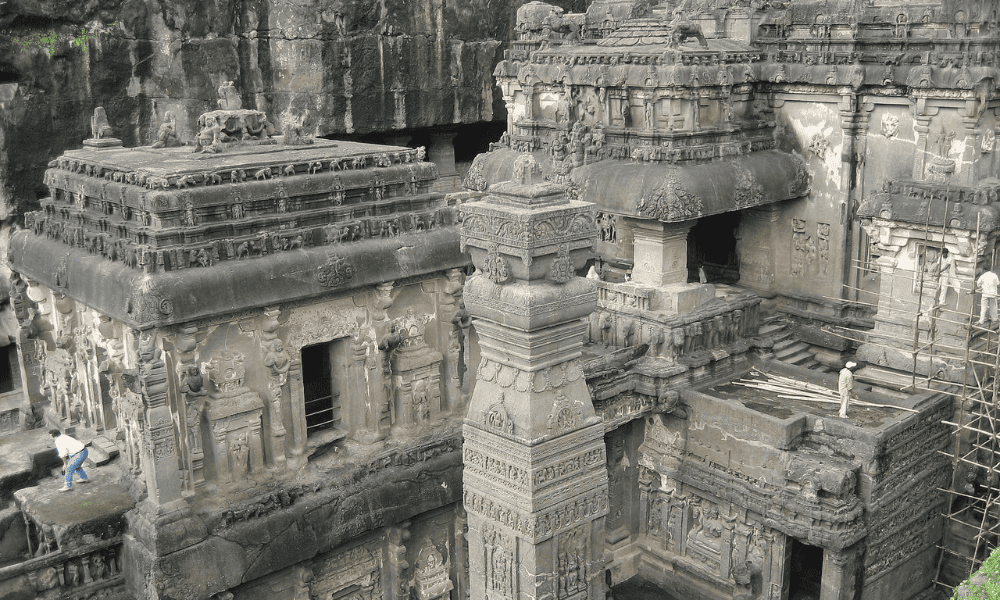Time Travel Through India’s UNESCO World Heritage Sites: Exploring Architectural Wonders and Historical Marvels
 India’s landscape is adorned with a tapestry of architectural brilliance and historical significance that spans centuries. Recognizing the value of these treasures, UNESCO has bestowed the title of World Heritage Sites upon many of these cultural and natural wonders.
India’s landscape is adorned with a tapestry of architectural brilliance and historical significance that spans centuries. Recognizing the value of these treasures, UNESCO has bestowed the title of World Heritage Sites upon many of these cultural and natural wonders.
The Majestic Taj Mahal, Agra, Uttar Pradesh
We begin our journey with the iconic symbol of love, the Taj Mahal. Built by Mughal Emperor Shah Jahan in memory of his wife Mumtaz Mahal, this ivory-white marble mausoleum stands as an eternal testament to architectural splendor and emotional depth.
The Enigmatic Ellora Caves, Aurangabad, Maharashtra
The Ellora Caves are a marvel that seamlessly fuses Buddhist, Hindu, and Jain traditions within a single complex. Carved into the rock, these caves house exquisite sculptures, monasteries, and temples, showcasing India’s religious diversity and artistic excellence.
The Intricate Khajuraho Group of Monuments, Madhya Pradesh
The Khajuraho Group of Monuments is famous for its intricate and sensuous sculptures that adorn the temples. These sculptures depict various facets of life, and their intricate detailing showcases the artistry and craftsmanship of the Chandela dynasty.
The Ancient Mahabalipuram, Tamil Nadu
Also known as Mamallapuram, this coastal town is renowned for its rock-cut temples and monolithic structures. The Shore Temple, Arjuna’s Penance, and the Pancha Rathas reflect the exquisite Dravidian architecture that flourished during the Pallava dynasty.
The Revered Qutub Minar Complex, Delhi
Standing tall in the heart of Delhi, the Qutub Minar is the world’s tallest brick minaret. The Qutub Minar Complex, a UNESCO World Heritage Site, also features historical structures such as the Quwwat-ul-Islam Mosque and the Iron Pillar.
The Regal Fatehpur Sikri, Uttar Pradesh
Built by Emperor Akbar, Fatehpur Sikri is a Mughal masterpiece that seamlessly blends various architectural styles. The Buland Darwaza, the Diwan-i-Khas, and the Panch Mahal are among the awe-inspiring structures that grace this historical city.
The Marvelous Hampi, Karnataka
The ruins of Hampi, a UNESCO-listed site, transport visitors to the grandeur of the Vijayanagara Empire. The sprawling complex boasts stunning temples, palaces, and stone-carved wonders that offer a glimpse into a bygone era.
The Serene Sanchi Stupa, Madhya Pradesh
Sanchi Stupa stands as an important Buddhist monument, embodying the essence of Buddhist architecture. Adorned with intricate carvings and stupas, it offers a serene space for reflection and reverence.
The Timeless Ajanta Caves, Maharashtra
The Ajanta Caves are renowned for their exquisite rock-cut Buddhist cave temples and monasteries. The intricate paintings and sculptures provide insights into ancient Buddhist art and the spiritual practices of the time.
Treasures Beyond Time
India’s UNESCO World Heritage Sites are more than architectural wonders; they are portals to the past, connecting us to the stories, cultures, and innovations of our ancestors. These sites invite us to step back in time, marvel at human ingenuity, and appreciate the enduring legacies that shape our present. As we explore these historical marvels, we find ourselves not just tourists, but time travelers experiencing the essence of India’s rich heritage.



